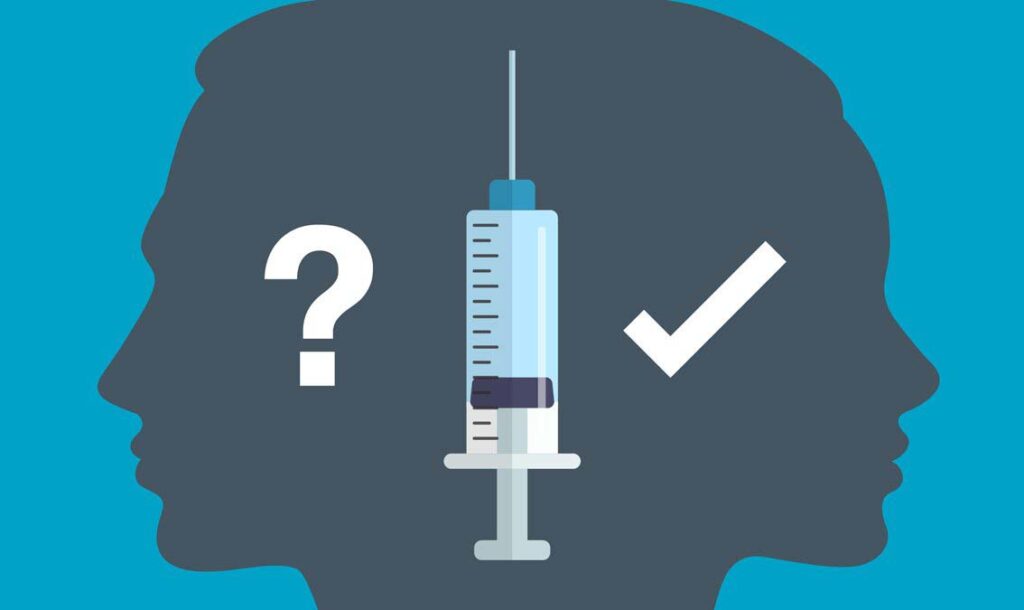U.S. Census officials says that nearly 30 percent of America’s young adults report that they will not seek COVID-19 vaccinations. (Image courtesy of edx.org)
WASHINGTON, D.C. – Although Utah’s COVID-19 vaccination rate — now at 78 percent — exceeds the national average, about 20 percent of the state’s population report that they are still hesitant to receive those immunizations.
Statistics recently released by the U.S. Census Bureau indicate that a significant percentage of those Utah vaccine-doubters are young people in Generation Z (ages 18 to 23) and millennials (ages 24 to 34).
About 1.7 million Utahns in those age groups make up more than half of the state’s population, according to the Kem C. Gardner Policy Institute at the University of Utah. Census officials say that 28 percent of all Americans in the Generation Z and millennial age groups have indicated that they will not seek COVID-19 immunizations.
If that prediction holds true in Utah, nearly 15 percent of the state’s population will not be vaccinated. That threatens health officials’ goals of reaching so-called herd immunity, a widely debated concept that most scientists say can be achieved by vaccinating roughly 80 to 90 percent of the adult population. Achieving that goal, they say, would leave the coronavirus with so few potential hosts that it will eventually disappear.
As of early June, the U.S. Food and Drug Administration confirmed that the Pfizer vaccine for COVID-19 was safe for the immunization of 12- to 15-year olds.
Despite that, young adults throughout America still express reservations about receiving those vaccinations.
Here in Utah, young people have told Census pollsters that their primary reasons for being hesitant about receiving vaccinations include possible side effects of the vaccine (59 percent), doubts about the effectiveness of the vaccine (41 percent) and the belief that vaccination isn’t necessary for them (40 percent).
Public health officials attribute young adults’ concerns about COVID-19 vaccinations to inaccurate news reporting early in the pandemic and outright misinformation spread later by social media.
For example, media analysts at the Annenberg Public Policy Center at the University of Pennsylvania suggest that young adults may be hesitant about receiving the COVID-19 vaccine because most public messaging throughout the pandemic has focused on the threat of the coronavirus to older adults, who are typically more susceptible to COVID-19 and suffer more severe symptoms.
Those reports may have inadvertently sent the wrong message that young people aren’t threatened by COVID-19, they say.
Census information indicates that reports of COVID-19 vaccination hesitancy decline as older population segments are surveyed. While 28 percent of Gen Z (ages 18 to 24) and millennials (ages 25 to 39) are hesitant to receive immunizations, only 21 percent of adults in ages 40-54 report similar concerns. In adults ages 55-64, vaccine hesitancy drops to 14 percent and only 9 percent of adults over age 65 are resistant to immunization.
Vaccine hesitancy also seems to decline within the young adult population depending on educational attainment.
Only about 10 percent of U.S. young adults with college degrees report that they are hesitant to be vaccinated against COVID-19. But that sentiment jumps to 22 percent for college undergraduates, to 26 percent for high school graduates and 28 percent for those with no high school experience.
Given those figures, public health officials are concerned that unvaccinated young adults could become a source of future coronavirus infection spikes at a time when most of the U.S. population believes that the pandemic is waning.
To combat vaccine hesitancy in the nation’s young population, the Centers for Disease Control announced a $3 billion initiative in March to increase vaccine acceptance. The Biden White House has also launched an information campaign using a coalition of several hundred public interest groups to spread positive messages about COVID-19 vaccines via social media.

